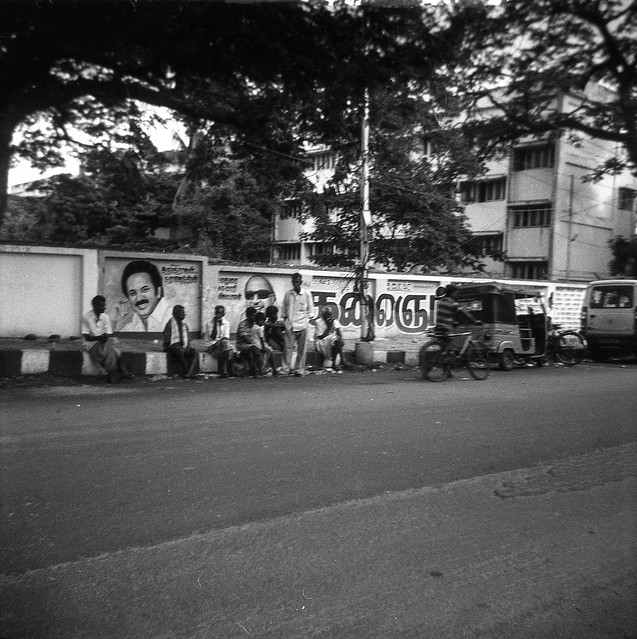 The Brownie Reflex Synchro Model was made between 1941 and 1952 in the US, and until 1960 in the UK, and closely followed the (non-synchro) Brownie Reflex. It was called a “Reflex” because, like most SLR (single lens reflex) cameras still in use today, it used a mirror to reflect the image from the lens to a viewfinder where the user could see what the lens was “seeing.” A twin-lens reflex like this one used a pair of lenses with identical focal lengths. The lower lens was used to focus the image onto the film, while the upper lens reflected the image to a large viewfinder facing upward, so that the camera could be held steady at waist level. True twin lens reflex cameras allowed focusing and the lenses were connected to each other via the focusing mechanism. Pseudo TLRs like this one have no focus mechanism – they used an aperture that was likely to produce a sharp image for anything more than five feet from the camera. The “synchro” was added when twin contacts for a flash attachment were added to the design. The camera requires no focusing, has only a switch for “bulb” (shutter stays open) or “instantaneous” (about 1/50 of a second). There are millions of these still out there and can be had for not much more than their original purchase price of $5.50 or $6. This particular model was interesting to me because it was advertised as still having a roll of film inside. So I got the camera and developed the film, and here is what I got:
The Brownie Reflex Synchro Model was made between 1941 and 1952 in the US, and until 1960 in the UK, and closely followed the (non-synchro) Brownie Reflex. It was called a “Reflex” because, like most SLR (single lens reflex) cameras still in use today, it used a mirror to reflect the image from the lens to a viewfinder where the user could see what the lens was “seeing.” A twin-lens reflex like this one used a pair of lenses with identical focal lengths. The lower lens was used to focus the image onto the film, while the upper lens reflected the image to a large viewfinder facing upward, so that the camera could be held steady at waist level. True twin lens reflex cameras allowed focusing and the lenses were connected to each other via the focusing mechanism. Pseudo TLRs like this one have no focus mechanism – they used an aperture that was likely to produce a sharp image for anything more than five feet from the camera. The “synchro” was added when twin contacts for a flash attachment were added to the design. The camera requires no focusing, has only a switch for “bulb” (shutter stays open) or “instantaneous” (about 1/50 of a second). There are millions of these still out there and can be had for not much more than their original purchase price of $5.50 or $6. This particular model was interesting to me because it was advertised as still having a roll of film inside. So I got the camera and developed the film, and here is what I got: 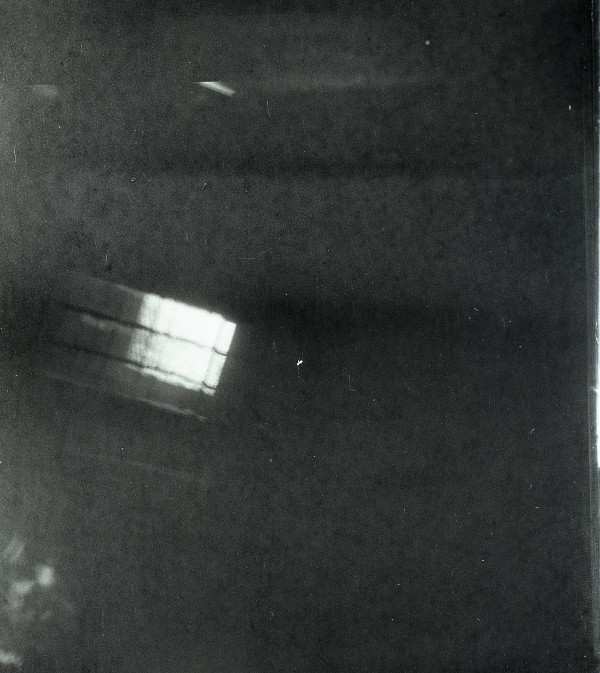
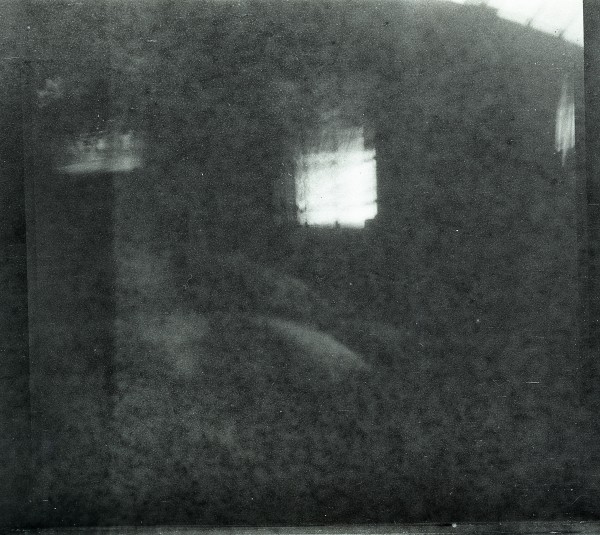
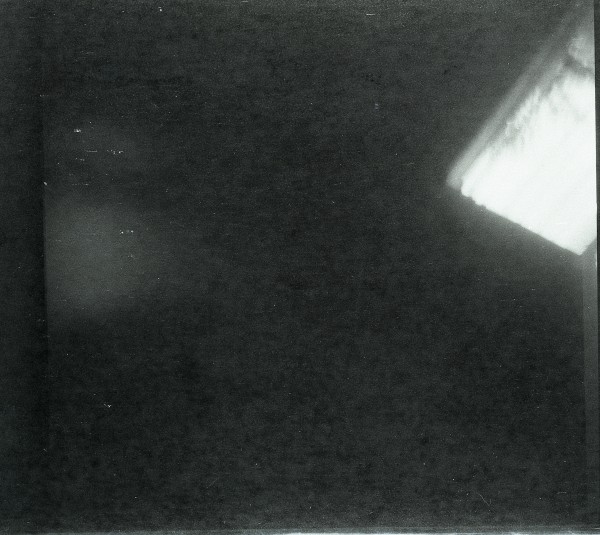 So yeah, not too impressive. So a few weeks went by and I finally loaded the camera with some of that new 127 film (Rerapan 100) that is being sold by Freestyle Photography and took it out for a spin. In the first photo, you can just make out that I was trying to snap a photo of a chicken sitting inside an auto-rickshaw.
So yeah, not too impressive. So a few weeks went by and I finally loaded the camera with some of that new 127 film (Rerapan 100) that is being sold by Freestyle Photography and took it out for a spin. In the first photo, you can just make out that I was trying to snap a photo of a chicken sitting inside an auto-rickshaw.
 TLRs can be handy in street photography because people often don’t realize they are being photographed, thus the scene is not spoiled – the camera dangles around the neck at waist level and the user is looking down at the viewfinder when the photo is taken. It can take up to 12 square photos with a roll of 127 film. The down side of a camera that requires no focusing and has no speed or aperture adjustments is that the light conditions have to be just right, or pictures end up too light or (usually) too dark. And if you move even a little, too blurry. I got a little of everything.
TLRs can be handy in street photography because people often don’t realize they are being photographed, thus the scene is not spoiled – the camera dangles around the neck at waist level and the user is looking down at the viewfinder when the photo is taken. It can take up to 12 square photos with a roll of 127 film. The down side of a camera that requires no focusing and has no speed or aperture adjustments is that the light conditions have to be just right, or pictures end up too light or (usually) too dark. And if you move even a little, too blurry. I got a little of everything. 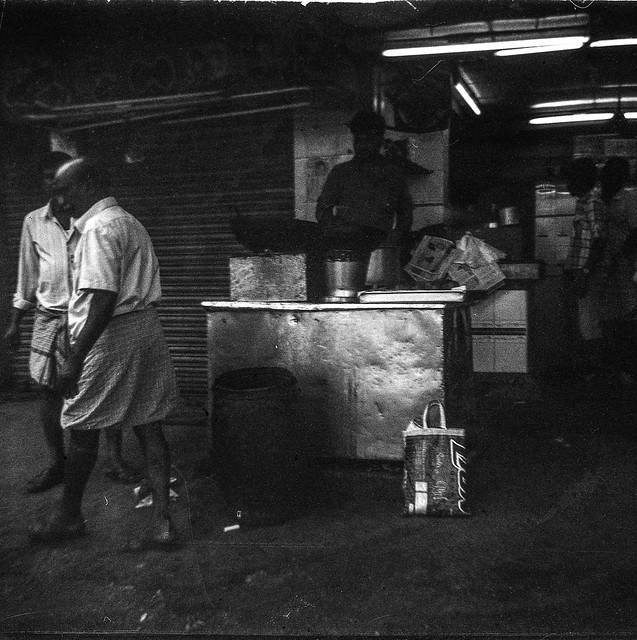
 I also lost a few shots because I loaded the film incorrectly on the spool, so that the spiraled film ended up touching in a couple of places, giving photos like this:
I also lost a few shots because I loaded the film incorrectly on the spool, so that the spiraled film ended up touching in a couple of places, giving photos like this: 
A few of the photos didn’t turn out too bad. This first shot is a tall building we have seen a million times – it stands near one of the major temples in Chennai, and usually the open side seen on the photo below is just corrugated sheets of metal. We were surprised to see it was open, and this structure inside, but don’t really know what it’s for (though it surely has something to do with the temple)
 Here you can definitely see the effect of either the camera or the subject moving, and causing blur.
Here you can definitely see the effect of either the camera or the subject moving, and causing blur. 
The only picture that came out well ended up being pretty boring, but the light was right, the subject was far away and there was not a lot of movement going on so everything was sharp.
In all, it can be a fun camera to carry around and see what you can capture on the streets, but given the somewhat high failure rate on photos – even if I’d had some practice – nowadays a roll of Rerapan costs $11.99 (or you can trim down a $5 roll of 120 film) – it gets much more expensive than it needs to be.

